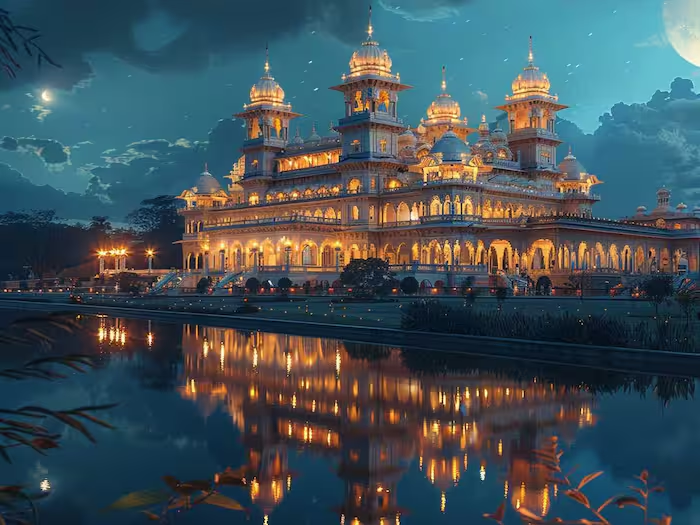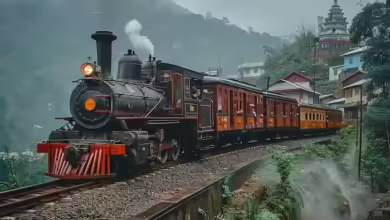Considering a Trip to Mysuru? These Are The Top 8 Things You Should Know
8 Things To Recognize Before Traveling To Mysuru
With its dazzling royal palaces, towering historical structures, vibrant silk markets, and heavenly temples, Mysuru offers tourists a captivating glimpse into Karnataka’s past.

It was once the thriving capital of the Kingdom of Mysore, which was controlled for 500 years by the Wadiyar family. Today, it is the second-biggest city in Karnataka and a center for developing tourism and technology that successfully combines history with contemporary goals.
Travelers may more easily tour Mysuru and enjoy it beyond its impressive landmarks by knowing the elements that built the city’s rich cultural character. They will also be pleased by the mosaic of endearing contrasts.
1. The pleasant weather
Nestled in the hills of the southern Deccan Plateau, about 770 meters above sea level, Mysuru has a pleasant, temperate temperature throughout most months, with the exception of brief, harsh summers and intense monsoon seasons.
The average temperature ranges from 25 to 30 degrees Celsius, with three main seasonal variations identified by climatic nuances:
Summertime, from March to June and rising into May, is hot and muggy, with highs often over 36 C, particularly in the afternoons. Fortunately, shops are flooded with luscious mangoes during early summer periods, when fragrant frangipani blossoms bloom.
Monsoon (July to September): Almost every day, there are heavy, humid rain showers. Even though the city may get severely waterlogged during occasional periods, the lush fields and green surroundings provide for inexpensive weekend trips to neighboring wilderness resorts.
Winter: From October until February
The weather is pleasant, with moderate temperatures of 20 to 25 degrees Celsius. It’s the ideal time of year to explore historic districts decorated for the Dussehra celebrations and indulge on filter kaapi at retro cafés without breaking a sweat.
2. Following the Royal Route
Mysuru, the former capital of the Wodeyar dynasty-ruled Mysore Kingdom before to India’s independence, is home to a wealth of architectural marvels created over several eras of control, entwined with tales of valiant kings and colorful courtesans.
3. Explore the highlights of the continuing heritage of royal architecture.
The Mysore Palace Encapsulating Indo-Saracenic magnificence, intricately designed mosaic glass doors lead to tall, richly carved mahogany ceilings. The durbar halls (royal assembly) feature stained Belgian glass chandeliers, and visitors are greeted by enormous gold-gilded elephant statues adorned with shimmering maharaja figurines. The Sunday night illuminations are not to be missed.
Palace of Lalitha Mahal The visionary Maharaja Krishnaraja Wodeyar IV commissioned the magnificent white structure in 1921 as an imposing Renaissance-style reception palace for esteemed European visitors. Among the distinguished visitors is Viceroy Lord Irwin. The interiors have a varied collection of European art, ranging from Spanish ceramic tiles to cherubs on the ceiling, and the gleaming red oxide flooring evokes the majesty of sailing large ships.
Center for Jaganmohan Art Constructed in 1861, the vast Jayachamarajendra Art Gallery has stone sculptures, musical instruments, and more, in addition to one of India’s best collections of traditional paintings by Mysore painters who specialize in Hindu mythology.Regular performances of Indian classical music and dance are also held at the cultural center. A must-see location.
Explore the subtleties that shape Mysuru’s historical identity by following the royal path, which goes beyond surface-level buildings and into deeper socio-cultural traditions.
4. Savor Unique Cuisine
Even though Mysuru has a wide range of cuisines, from fast vegetarian set meals to upscale restaurants with multicourse extravaganzas, trying out traditional dishes gives fascinating insights into important cultural elements like festivals or unusual ingredients.
5. Learn about local specialties in Mysore
Mysore Pak: Delightful dessert fudge created with a significant amount of ghee and gram flour, also available in versions with nuts and dried fruits within!
Bende Kaalu Saaru: Traditionally, the first dish of Brahmin dinners is a sweet red gram dal stew.
Ash gourd cooked with grated jaggery and coconut is called Haalu Kaalu Palya.
Akki Roti: Spicy coconut chutney pairs well with this thick, flat rice bread.
A delicious tea time snack is Oggarane avalakki, which is beaten rice with subtle flavors of cumin, curry leaves, and channa dal. For variety, add sliced onions and/or lemon.
Make sure to sample the filter coffee blends as well.
6. Take in the Grandeur of Dussehra
As the leading city of the Mysore Kingdom, this place hosts the most spectacular Dussehra celebrations, with ten days of cultural extravaganza leading up to the grand Vijayadashami parade climax that is seen by lakhs of people.
The esteemed customs include blessings, processions, and unique pujas conducted by former royals and priests at certain city temples prior to the venerated goddess Chamundeshwari idol being set on a unique silver howdah (seat) atop a magnificently imprisoned elephant.
A once-in-a-lifetime event, the festive parade, which includes elaborately painted elephants, horses, camels, and cultural groups showcasing the region’s legacy, weaves along brightly illuminated avenues, greeted by rapt spectators.
7. Investigate Dynamic Local Markets
Mysuru’s lively old quarter marketplaces, which sell goods that haven’t changed over centuries and provide retail therapy straight out of artisan workshops using techniques perfected for royalty, are the finest places to discover the city’s essence for most tourists looking for genuine cultural experiences beyond monuments and museums.
8. Well-known Bazaar Districts Devaraja Market: A historic vegetable and flower market that has been there since the time of Tipu Sultan
Shivarampet is a wholesale street selling betel nuts, dried fruits, and spices.
Sayyaji Rao Road is a posh business district with bars and elegant luxury retailers.
Ashoka Road is a hive of little stores selling flowers, puja supplies, and aromatic agarbathis.
Shops on Irwin Road that specialize in sandalwood artifacts and Mysore silk saris
I hope that learning about these aspects of magnificent Mysuru—from bustling bazaar trails to regal architectural marvels—leaves you speechless and yearning for more when you’re making travel plans to other cities.






